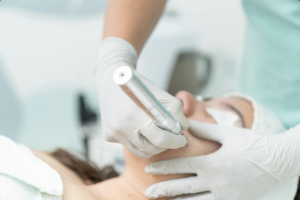Comparing Costs Of Knee Treatments In Singapore
Knee pain is a common health issue that affects people of all ages. It can come on suddenly as a result of an injury, or it can develop slowly over the years and gradually get worse, as in the case of arthritis. Sports participants, outdoor enthusiasts, and people who are overweight are at risk of developing knee issues. Depending on the underlying cause and type of knee injury, its treatment and subsequent costs will vary.
Types of knee conditions requiring treatment include:
- Osteoarthritis.
- Rheumatoid arthritis.
- Overuse issues, such as Patellofemoral pain (PFPS or runner’s knee).
- Ligament injuries, such as ACL tears and meniscus tears.
- Trauma-related injuries resulting from traffic accidents of falling and landing badly.
- Sports injuries.
The goals of knee treatments are to provide pain relief, improve mobility, restore knee function, and prevent further damage. Singapore is a hub for high-quality medical care, with orthopaedics being one of the top medical directions available to citizens, permanent residents, and medical tourists. It is important to understand the various treatment options and their cost implications. This article will compare the costs and benefits of non-surgical and surgical knee treatments in Singapore to help readers make informed decisions.
Non-Surgical Knee Treatments and Costs
Various non-surgical treatments are available for mild to moderate knee pain, which doctors try first to avoid the risks of surgery. Muscle and tendon strains and minor tears are injuries that can be recovered with rest and physiotherapy.
Home Care: Implement RICE
Rest, ice, compression, and elevation (RICE) is a simple treatment for mild to moderate knee pain that you can implement at home at no cost. It involves the following steps.
Rest: Rest your knee by not moving around. Keeping it still allows it to start healing while protecting it against further injury.
Ice: Ice helps reduce swelling and inflammation. Wrap the ice in a cloth and apply it for 15 – 20 minutes several times a day until the swelling has subsided.
Compression: Wrap a compression bandage securely around the knee. This will also help reduce swelling and ease discomfort.
Elevation: Keep the leg raised with the injured knee higher than your heart to help reduce swelling.
Medications for Knee Pain
Doctors often prescribe over-the-counter (OTC) medications such as Panadol or nonsteroidal anti-inflammatory drugs (NSAIDs) such as ibuprofen for mild to moderate knee pain. They cost from $5 to $20 per pack, depending on the brand and quantity.
When OTC medications do not relieve the pain, doctors will prescribe prescription NSAIDs, which can cost $50 to $150 per course. The price is affected by the type of medication, the dosage, and the length of the course.
If the medication is to treat a chronic condition like osteoarthritis, the cost will be higher due to the increased length of treatment. Arthritis conditions tend to get worse over time, requiring higher dosages, which affect the price.
The cost may also be exacerbated by gastrointestinal side effects caused by NSAIDs. Long-term NSAID use can cause side effects that require treatment with additional medications, adding to the costs.
Physical Therapy
Physical therapy provided by professional physiotherapists in Singapore costs around $80 – 150 per session. They help patients with strengthening exercises for knee pain as advised by the doctor and manual therapy, which can be very effective for sore knees.
Injections
Shots that can help relieve knee pain, especially knee pain due to osteoarthritis, include hyaluronic acid and corticosteroid injections. Injections can range between $150 and $1000 depending on the type of injection.
Platelet-rich plasma (PRP) and hyaluronic acid injections in Singapore start from $1000. PRP injections containing high concentrations of the patient’s own platelets are effective for the treatment of pain due to meniscus tear or osteoarthritis.
Knee braces
Doctors prescribe knee braces to support treatments for ACL tears, sprains, ligament injuries, and kneecap instability. Braces protect the knee during the recovery process. Depending on the type of brace, this cost can range from $140 to $2,500.
Alternative Therapies
- Acupuncture
Acupuncture is an ancient Chinese medicine treatment that has become popular in modern medicine. Research has revealed that acupuncture works best for knee pain caused by osteoarthritis and for post-operative pain. A treatment session will set you back $68 – $98.
- Chiropractic care
Chiropractic care is an alternative therapeutic approach that primarily treats conditions related to the spine and nervous system. A chiropractic session involves spinal or joint manipulation to improve spinal alignment and restore joint mobility.
Promoting overall musculoskeletal health, chiropractic adjustments can help alleviate pain and discomfort associated with conditions such as patellar tendonitis, meniscal tears, osteoarthritis, rheumatoid arthritis, sprains, and repetitive strain injuries. A session costs around $180, and multiple sessions are usually required. With promotions, it can cost as little as $60 per session.
Lifestyle Modifications
Keeping a healthy weight and doing low-impact exercises like swimming or cycling can go a long way in relieving knee pain. Extra weight is disastrous for bone and joint health. The extra weight puts unnecessary pressure on joints and accelerates wear and tear of the knee joint.
Research has shown that 10% weight loss leads to better function and decreased inflammation, resulting in less pain.
The best way to lose weight and take the stress off your knees is to follow a healthy eating regime. Focus on healthy eating rather than losing weight. In the long term, this approach is more sustainable and will cost you nothing.
Evaluation of Non-Surgical Treatments for Knee Pain
Conservative treatments for knee Issues, such as physical therapy, medications, and lifestyle modifications, are cost-effective and require minimal downtime, so they are suitable for mild to moderate conditions. These approaches can provide pain relief, improve mobility, and prevent further damage, but they may not provide adequate relief for severe cases or cases that worsen over time.
In these cases, multiple sessions over a long time increase the cost of treatment, making these treatments less cost-effective in the long run. To get the full benefits of these treatments, patients need to stay committed to their treatment plan over weeks, months, and even years.
Surgical Knee Treatments and Costs
When conservative, non-surgical treatments don’t have the desired effect, or in cases of severe physical trauma, your orthopaedic surgeon may ask you to consider surgical options, which may be one of the following procedures.
Knee Arthroscopy
A knee arthroscopy, or keyhole surgery, is the most common type of knee surgery. It is a minimally invasive procedure that entails a few small incisions through which the operation is conducted. The doctor uses an arthroscope for the operation. An arthroscope is a minute camera with a light attached to it so the surgeon can see the knee from inside the body. The operation is done with tiny instruments that enter similar nearby holes as the camera.
The cost of knee arthroscopy in Singapore is $7,000 – $12,000, depending on whether the procedure is done at a private, subsidised, or government institution.
Partial Knee Replacement
A partial knee replacement replaces only the portion of the knee that has been damaged. Damage can be the result of osteoarthritis. The surgeon replaces the damaged part with an implant, and the rest of the knee is left untouched. The surgery is less invasive than total knee replacement and requires a shorter recovery time.
The cost of a partial knee replacement in Singapore is somewhere between $16,000 and $32,000, depending on where the operation happens and other factors:
Public hospitals charge between $16,000 and $22,000, with subsidised patients paying between $5,000 and $7,000.
At a private hospital, you’ll pay between $19,000 and $32,000. Factors such as the type of surgery, implants, medication and imaging affect the cost.
Total Knee Replacement (Knee Arthroplasty)
Doctors usually recommend knee replacement surgery for patients with knee osteoarthritis or rheumatoid arthritis. These conditions can cause the knees to become swollen and stiff, making walking painful and difficult.
In knee replacement surgery, the damaged bone and cartilage are replaced with metal implants and high-grade plastic components. A total knee replacement surgery will replace the whole knee joint.
Total knee joint surgery in Singapore varies from $ 18,000 to $35,000. In public hospitals, the cost is $5,000 to $7,000 for subsidised patients. In private hospitals, the cost is $30,000 – $36,000. MediSave patients can get a payout of $4,650 towards the cost.
Ligament Reconstruction (ACL surgery)
Doctors perform knee arthroscopy to diagnose and treat ACL tears and other knee joint issues. The surgeon makes small incisions around the knee and inserts an arthroscope into one of the incisions. With the help of a camera and light, a magnified view of the inside of the knee joint is projected on a monitor, enabling the surgeon to assess and repair the damage.
This minimally invasive technique causes minimal disruption to surrounding tissues, supporting rapid recovery.
The cost of an ACL reconstruction surgery in a public hospital is between $502 and $1,200. At a private hospital, the costs can vary from $17,000 to around $30,000. Patients with MediSave cover can claim a maximum of $3,950 for a knee arthroscopy.
Additional Costs
An initial consultation with a professional orthopaedic specialist in SIngapore to assess the knee problem and determine suitable treatment costs between $150 and $300.
Moreover, diagnostic imaging tests to diagnose knee conditions, such as X-rays, CT, or MRI scans, are $700 – $1,200.
Hospital stay costs vary according to the length of the stay, the ward type, and the institution type. For both public and private facilities, various prices apply. In public hospitals, it can range from $38 to $600 and at private institutions, it can vary from %1,500 to $3,000 per day.
Post-surgical care may add additional costs for physical therapy, follow-up consultations, medications, and imaging.
Evaluation of Surgical Treatments
Surgery provides long-term relief of pain and discomfort for severe conditions, such as ligament and cartilage damage due to arthritis. Surgeries like total or partial knee replacement and ACL reconstruction can restore full function and mobility.
However, these benefits come at a considerably high cost. In addition, surgery always comes with risks, such as infection or post-operative complications.
Cost Comparison: Non-Surgical vs. Surgical Treatments
It is clear that non-surgical options are more affordable. They are also effective for mild to moderate conditions. Non-surgical therapies include medications, injections, physical therapy, and acupuncture, which may incur ongoing costs.
Surgical treatments, such as knee replacements or arthroscopy, involve significantly higher initial expenses and provide long-term relief while not requiring ongoing treatment.
However, comparing prices is challenging due to variations in individual needs, treatment complexity, and provider-specific pricing structures. It’s possible to work out the total cost for surgical treatment, but for conservative treatment, factors like the number of doctor’s visits, number of treatments and constant cost increases confound the arithmetic.
Choosing between Conservative and Surgical Treatments
Aside from cost implications, choosing the right treatment option depends on the nature of the knee condition and the pain level. For mild to moderate conditions, where costs or recovery time are key concerns, non-surgical treatments are indicated.
For severe conditions or when non-surgical methods fail, surgery may be the only option that provides long-term relief.
Conclusion
It is not always clear whether to proceed with conservative or surgical treatment by an orthopaedic doctor for knee issues. Non-surgical treatments, such as physical therapy, injections, and weight reduction, can provide symptomatic relief and sometimes delay surgery. Mild cases can heal completely.
At the same time, surgical options like total or partial knee replacement can restore functionality and provide long-term pain relief in severe cases, like cartilage damage due to arthritis. These benefits come with a higher price tag, though.
If you are living with debilitating knee pain, consult an orthopaedic specialist for personalised advice. Whether you end up choosing conservative or surgical treatment, maintaining mobility and quality of life should be the deciding factor.
Related Articles
Your Guide to Buying a Full-Grain Leather Sofa in Singapore
Not many items of furniture carry as much importance in a dwelling as the sofa. It is the focal point of the living room, cradling voluminous conversations and enduring years…
How to Pick an Ideal Aesthetic Clinic in Singapore? Safety, Prices, and Factors to Consider
Key Insights The Relevance of Selecting the Perfect Aesthetic Clinic You will find a lot of aesthetic treatment centres here in Singapore. There’s Botox, fillers, boosters to the skin, and…
From Incorporation to Expansion: The Complete Guide to Business Consulting Services in Singapore
Starting or expanding a business in Singapore can feel like standing at the edge of possibility. The opportunities are vast, including access to Asia’s markets, a pro-business government, and world-class…


